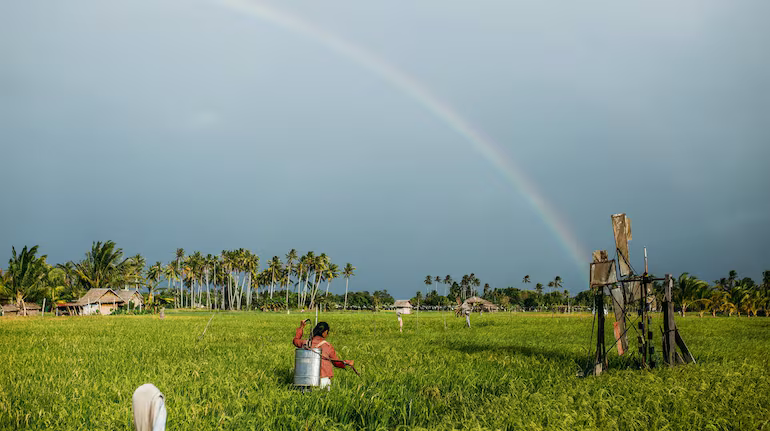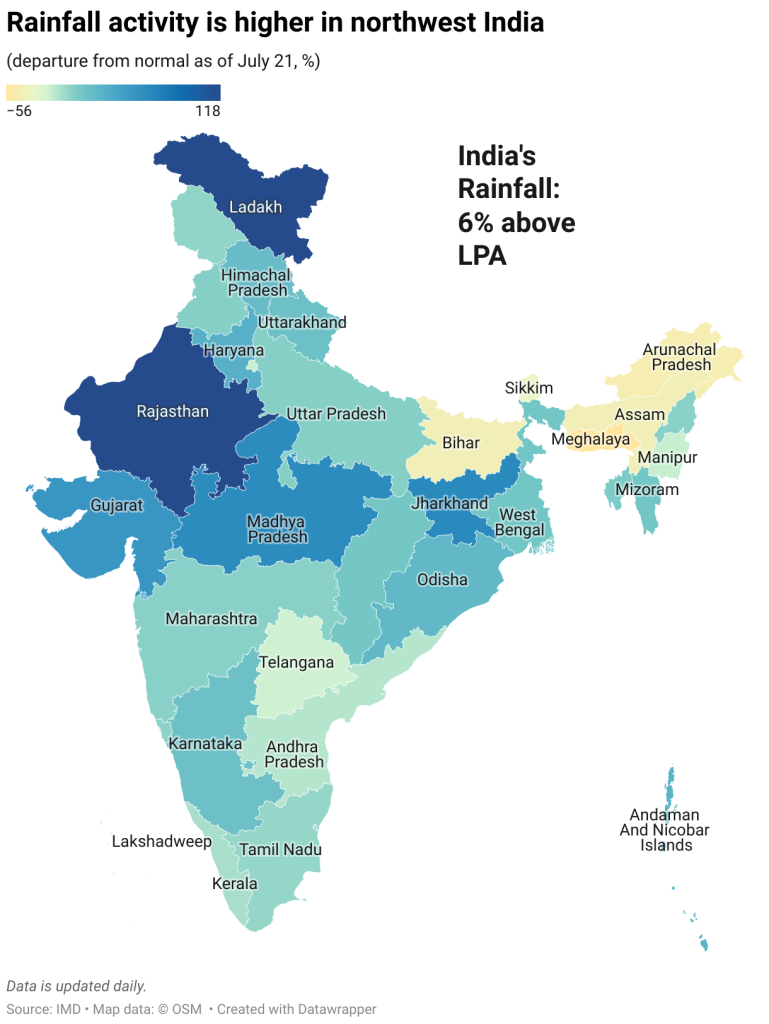Tags
Rice, coarse cereal sowing surges on back of strong monsoon
Overall kharif acreage up 4.1% as of mid-July; pulses and oilseeds show mixed trends.
Ishaan Gera

Timely and well-distributed monsoon rainfall in northern and western India is beginning to reflect in early kharif sowing data, with signs pointing to a healthy agricultural season.
Rice sowing jumped 12.4 percent year-on-year, accelerating from 11 percent growth recorded just a week earlier, according to data reviewed by Moneycontrol. Coarse cereals sowing also remained upbeat, rising 13.6 percent on-year, aided by 117 percent above-normal rainfall in Rajasthan and over 40 percent in the adjoining regions.
Pulses sowing rose 2.3 percent, but oilseeds acreage contracted by 3.7 percent, indicating uneven momentum across crops. Jute and cotton sowing was also down from last year’s levels.

As of mid-July, total kharif acreage was 4.1 percent higher than the same period last year—though this marks a slowdown from 6.7 percent growth in the previous week.
Tur cultivation under pressure
While overall pulse acreage improved, tur (pigeon pea)—a key kharif pulse—remains a concern. Tur sowing was down 5 percent from last year.
Karnataka accounts for the largest share (29 percent), but Telangana and Andhra Pradesh also have a significant share at 13 percent combined. Both these states have faced rainfall deficits of over 15 percent so far, even as the country overall has received 6 percent excess rainfall.

Tur or Arhar has highest weight among pulses in the inflation basket. The staple alone accounts for 27 percent share in pulses basket.
Telangana also accounts for 9.4 percent of the country’s rice sowing and 11.5 percent of oilseed acreage, underscoring the importance of its weather and water availability to national trends.
Despite lower rainfall, reservoir levels in the region may help offset concerns. As of mid-July, Andhra Pradesh’s reservoirs were at 271 percent of the 10-year average, while Telangana’s were 5 percent higher.

In contrast, Madhya Pradesh, which contributes a fifth of India’s pulses acreage, has received 62 percent more rainfall than its long-period average, boosting sowing prospects.
Of India’s 36 states and Union Territories, nine have received below-normal rainfall, while eight have seen excess or large excess rains.
If current sowing trends continue, India’s kharif output may exceed last year’s levels, which could help keep food inflation in check and support rural consumption in FY25.
India’s inflation declined to its lowest level in six-and-a-half years of 2.1 percent, as food items slipped into deflation for the first time in 74-months.
India’s rural performance was one of the bright spots in GDP in FY25, with the sector recording its fastest pace of growth (4.63 percent) in five years.
https://www.moneycontrol.com/news/business/economy/rice-coarse-cereal-sowing-surges-on-back-of-strong-monsoon-13305511.htmlPublished Date: July 22, 2025






